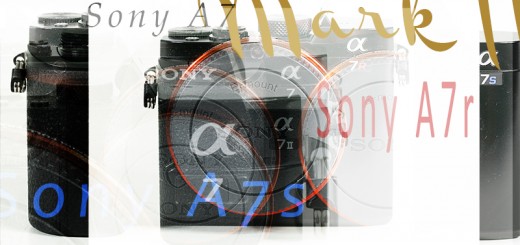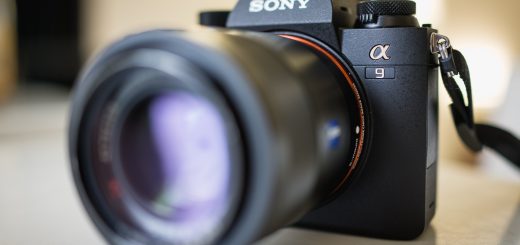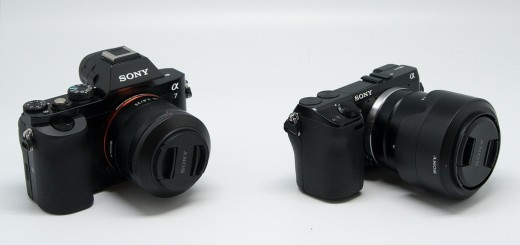Sony Alpha A7 (ILCE-7) and Sony Alpha A7r (ILCE-7r) vs rest of the world. Part 5. Cropping games – A7r and NEX 5N
That is not to say, that any of the Sony E-mount cameras can’t be used for action, because that won’t be true. There are few wildlife and even BIF shooters who are using NEX cameras with MF lenses with great success. But that require lot of skills, and I think that for amateurs and enthusiasts, DSLR will be better – easier tool to use, when fast Af and AF tracking is required.
But let’s keep rolling this review, we might find other reasons for this or that…
In this article, I would like to show you what you can expect from A7r camera in APS-C crop mode and how it compare with NEX 5N in that respect.
As you probably now, you can use A7 or A7r cameras in their native – full frame mode (using full size of the full frame sensor), or you can use them in a APS-C “crop” mode, (using only APS-C comparable part of the full frame sensor).
In the FF mode, only lenses designed to cover full frame will cover full format. Sony differ those full frame lenses in E-mount by giving them designation FE in their name.
With the introduction of the A7 and A7r camera, there were only three FE lenses available – kit lens (that comes only as a part of the kit with the A7 camera) – Sony FE 28-70/3.5-5.6 OSS, WA lens – Sony FE 35/2.8 Sonnar T*, and standard lens Sony FE 55/1.8 Sonnar T* (That one has still very limited availability, and I can’t get one here yet.)
Of course, there are many legacy full frame lenses, that could be used with the appropriate adapters (but this article is not about them) and Sony SEL lenses designed for APS-C cameras with E-mount, formerly known as NEX series. (Sony decided to abandon NEX name in the future)
To make it simple – FE lenses are FF lenses, while SEL lenses are APS-C lenses.
A7 and A7r allows you to use any of the Sony SEL lenses either in a full frame mode or APS-C crop mode. (In the custom settings – page 5)
There are three options – On, Auto, or Off.
This is one of the very clever settings that A7/r offers. It means that you can decide to use APS-C lenses in full frame mode if you wish so.
Why would you want to do so?
Because most lenses are designed to cover slightly larger than intended area, in some cases (if the lens has flat focus field and do not suffer from significant spherical aberrations, or when you stop lens enough to improve corners), shooting in full frame mode and cropping while post processing, will result in the larger field of view and larger image than in camera APS-C crop mode.
Here is an example of doing so with Sony SEL 24/1.8 Sonnar T* ZA lens.
Original full frame mode result in significant vignetting…
If you set A7/r to APS-C Size Capture “ON” (or Auto if used with E-mount lenses that communicates with camera) image will be recorded at smaller sensor area, resulting in a “cropped image” at the size of 4800px x 3200px (15,36 Mpx)
But I managed in this case to crop larger area – at 5100px x 3400px (17,34 Mpx) using custom crop in Photoshop and still excluding any vignetting in the corners.
To make it easier to understand what I did (for those who are not skilled in post processing), I made outlines within original image, showing the difference in the cropped area – green line shows what camera select in APS-C Size Capture mode, while red line shows my custom crop from the original full frame image.
As you can see, I was very conservative in my cropping and working a little bit on the corners to remove vignetting, you should be able to make even larger crop.
In this case, the original (full frame image) has around 36 MB, while in camera APS-C Size Capture (cropped) image has around 16 MB.
Because, original camera crop is around 16 Mpx, let’s see how does it compare with NEX 5N (16Mpx) image taken with the same lens…
Once again – A7r Camera crop (APS-C Size Capture -On)
And Sony NEX 5N
As you can see, difference in FOV is very small. There are some exposure differences, but this is not test about it (they are probably caused by lighting conditions change during testing)
Let’s see how the resulting sharpness compare between the two, when we look at both images at 100%
We might talk about minor differences in resolution, but they are most probably caused by marginal different focus plane.
One more thing to mention…
Some lenses for APS-C E-mount cameras, such as Sigma 30mm f/2.8 EX DN E have plastic baffle on the mount side that blocks the lens projection. This baffle serves aesthetic purpose – to hide inner lens electronics and to prevent potential reflections in some situations. By removing this baffle, you can enlarge the projection of the lens and thus use even larger part of the A7/r sensor with a APS-C lens.
Here are two images showing how much more coverage you can get by removing lens baffle
Sony A7 with Sigma 30mm f/2.8 EX DN E with its original baffle inside.
Sony A7 with Sigma 30mm f/2.8 EX DN E with baffle removed
Removing the baffle is quite easy (if you want to see how to do it, check my video instruction, but please note that doing so, you might void Sigma warranty and I take no responsibilities for anything. In fact I am not advising you to do so 🙂
This can be done only with some lenses, but it can also be done with the LA-EA1 adapter with very interesting and useful results. By removing adapter baffle, you will almost get functionality of LA-EA3. (There is some remaining vignetting however).
From this little test, I would like to propose the following conclusion…
1.
Using Sony A7r in the APS-C Size Capture mode, will result in a image resolution comparable with Sony APS-C 16 Mpx sensors (NEX 5N/R/T, NEX 3C/F/N, NEX6). In that respect, we can say, that A7 can serve as any other APS-C NEX camera (except NEX 7). So, with A7r, you have 36 Mpx full frame and 16 Mpx (approx.) APS-C cameras. Two in one.
2.
Using custom cropping during post processing, will result in most cases in even wider FOV and larger images than camera Auto APS-C crop mode. If you have basic skills in post processing, shooting in Full Frame mode and applying custom cropping later, could be better option.
In the next article, I will show you how A7 with Sony FE 35/2.8 ZA compares to NEX 7 with Sony SEL 24/1.8 ZA, because we have almost identical FOV at the same resolution.
Other parts of the rolling review:
Part 1
Part 2
Part 3
Part 4
Part 6
Part 7
Part 8
Part 9 – A7 vs A7r Final Showdown
Please help support this page and upcomming reviews and buy through affiliate links, with no extra cost for you:
Buy on BHPhoto: Alpha a7 Mirrorless Digital Camera
Buy on Amazon: Alpha a7 Mirrorless Digital Camera
To help this page survive, your donation will be highly appreciated.
![]()


























Thanks for posting, can’t wait to read the next one 🙂
Viktor,
Thanks alot for this article! I’m looking forward to the follow on piece as well 🙂
Best,
Ali
Díky moc za výborný nápad s odstraněním plasového dílu z objektivu, funguje to bezvadně i na Sigmě 60/2,8 EX DN
Není zač Petře,
já si to taky někde přečetl 🙂
S pozdravem,
Viktor